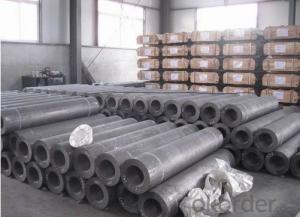When you think about the market, what comes to mind? For some, it’s a bustling scene filled with traders shouting and waving their arms, a chaotic symphony of commerce. For others, it’s a quiet, calculated game of strategy, played out in the digital realm. But what about the market for graphite electrodes? This isn’t a topic that typically sets hearts racing, but it’s a fascinating world with its own unique dynamics.
Graphite electrodes are a crucial component in the production of many industrial processes, particularly in the steel industry. They’re made from high-quality graphite, which is a form of carbon that’s known for its ability to conduct electricity and heat. This makes them perfect for use in electric arc furnaces, where they help to melt the raw materials and produce the final product.
Now, let’s dive into the market analysis of graphite electrode prices. It’s not as glamorous as a stock market crash or a cryptocurrency boom, but it’s just as important. The price of graphite electrodes can fluctuate for a variety of reasons, including supply and demand, the cost of raw materials, and even geopolitical factors.
One of the key factors affecting the price of graphite electrodes is the supply and demand balance. When there’s a high demand for steel, the demand for graphite electrodes also increases, which can drive up prices. Conversely, if the demand for steel decreases, the demand for graphite electrodes may fall, leading to lower prices. It’s a simple concept, but it has a significant impact on the market.
Another important factor is the cost of raw materials. Graphite is a natural resource, and its price can be influenced by a variety of factors, including mining regulations, environmental concerns, and even the weather. If the cost of graphite increases, it can have a direct impact on the price of graphite electrodes.
Geopolitical factors can also play a role in the price of graphite electrodes. For example, if there are trade restrictions or tariffs imposed on graphite imports, it can affect the availability and cost of the raw material, which in turn can influence the price of the electrodes.
But it’s not all doom and gloom. There are also factors that can help to stabilize the market and keep prices more consistent. One of these is technological advancements. As new technologies are developed that allow for more efficient production of graphite electrodes, it can help to reduce costs and make the market more stable.
Additionally, the development of alternative materials can also have an impact on the market. If a new material is discovered that can perform the same function as a graphite electrode but at a lower cost, it could potentially disrupt the market and change the dynamics of pricing.
So, what does the future hold for the market of graphite electrode prices? It’s hard to say for certain, but there are a few trends that we can observe. One is the increasing demand for electric vehicles, which require a significant amount of graphite for their batteries. This could potentially drive up the demand for graphite electrodes in the future.
Another trend is the growing focus on sustainability and environmental concerns. As the world becomes more aware of the need to reduce carbon emissions and protect the environment, there may be a shift towards cleaner, more sustainable methods of production. This could potentially impact the demand for graphite electrodes, depending on how they fit into these new methods.
In conclusion, the market for graphite electrodes is a complex and dynamic one, influenced by a variety of factors. While it may not be the most exciting topic to discuss at a dinner party, it’s an important part of the global economy and the industrial processes that we rely on every day. By understanding the factors that influence the price of graphite electrodes, we can gain a better understanding of the market and make more informed decisions about our own investments and business strategies.

